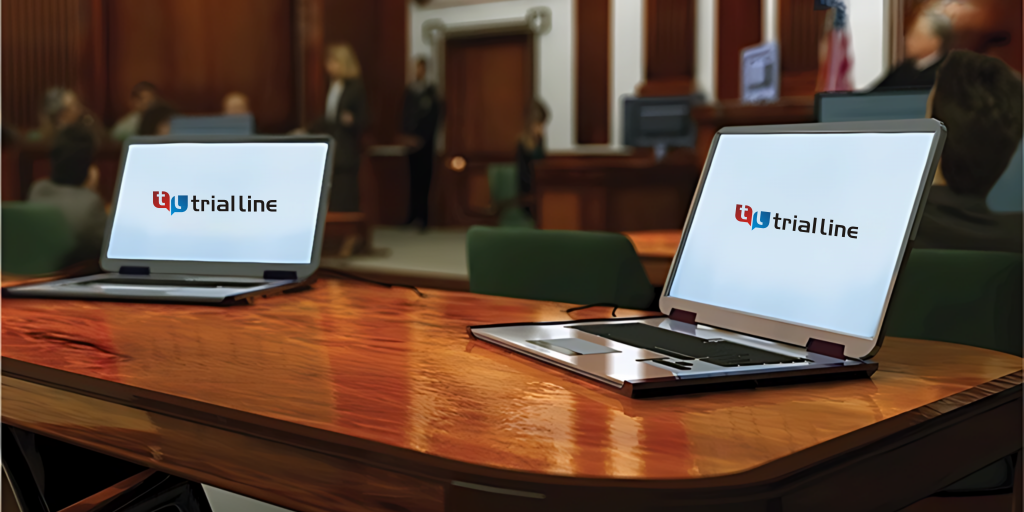Legal teams rely on powerful trial presentations to present evidence clearly.
Legal teams rely on powerful trial presentations to present evidence clearly.
Blog Article
Just How Test Presentations Enhance Your Debate and Encourage Jurors
Test discussions serve as a pivotal system for enhancing lawful arguments and convincing jurors. The tactical usage of visuals not only makes clear complex details but likewise captures jurors' interest more successfully than words alone.

Value of Visual Help
Aesthetic aids play an essential duty in improving the efficiency of trial discussions, as they can considerably increase target market interaction and retention of information. In the context of a test, where jurors are tasked with handling complicated details, visual help serve to simplify and clear up crucial points. Graphes, graphs, and photos can communicate information and ideas that might otherwise bewilder or perplex jurors, enabling for a more uncomplicated understanding of the evidence provided.
Moreover, aesthetic aids assist in maintaining juror interest throughout the proceedings. By damaging the monotony of verbal statement, these tools can stress important debates, making them more unforgettable. Effective visual help can also evoke emotional feedbacks, which can be critical in encouraging jurors to align with the presenter's story.

Crafting Engaging Narratives
An engaging story is vital in test presentations, as it acts as the foundation of effective persuasion. It permits lawyers to weave together truths, proof, and psychological aspects right into a meaningful tale that resonates with jurors. This narrative framework makes it possible for jurors to understand the intricacies of the instance while directing them via the attorney's disagreement.
To craft a compelling story, attorneys must focus on clarity and comprehensibility. In addition, the usage of dazzling summaries can develop psychological images that help jurors visualize the events, making the story extra remarkable.
In addition, incorporating crucial styles throughout the presentation reinforces the core message and aids in retention - trial presentations. The story must not only convey details yet additionally evoke a sense of justice, highlighting the risks entailed. Eventually, a well-constructed narrative fosters a link in between the jurors and the situation, positioning the lawyer's disagreement as both reliable and compelling, therefore raising the probability of a positive verdict

Involving the Court Mentally
Effective court engagement rests on the attorney's capacity to get in touch with jurors on an emotional degree. This connection can significantly affect jurors' perceptions and their ultimate decision-making. Utilizing psychological appeals enables lawyers to humanize the situation, changing abstract legal ideas into relatable experiences. By providing real-life stories or endorsements, attorneys can stimulate empathy and empathy, fostering a deeper understanding of the concerns at stake.
Aesthetic help, such as photographs or videos, can additionally improve psychological involvement, providing jurors with vibrant depictions of the instance's human components. Crafting a story that highlights the struggles and accomplishments of the people entailed ensures that jurors see beyond the lawful disagreements and recognize the human effects of their choices.
An attorney's passionate distribution can reverberate with jurors, strengthening their emotional investment in the instance. It's crucial to stabilize psychological charms with factual proof, making certain that jurors really feel obliged to act while remaining based in the fact.
Structuring Your Discussion

The body of the presentation should be my latest blog post rationally segmented right into bottom lines, each sustained by compelling evidence. It is helpful to use narration methods to weave realities into a narrative that jurors can quickly follow. Aesthetic aids, such as graphes and videos, can boost comprehension and engagement, assisting to highlight vital items of evidence.
Real-World Instance Research Studies
Analyzing real-world instance studies supplies important understandings into the art of test presentations and persuasion. For instance, the spots case of "O.J. Simpson v. The People of The golden state" illustrates exactly how aesthetic aids and compelling stories can sway jury perceptions. The defense group effectively utilized an approach that combined prominent specialist testaments with multimedia presentations, which mesmerized jurors and eventually affected their choice.
An additional noteworthy example is the "McDonald's Coffee Instance," where the plaintiff's attorneys utilized visuals images of the injuries sustained by Stella Liebeck. trial presentations. This raw aesthetic proof played an important function in conveying the extent of her burns, bring about a significant court honor. Such situations show Get the facts that impactful trial presentations typically rest on the efficient integration of visuals and storytelling to stimulate psychological feedbacks from jurors
In addition, the "Casey Anthony Test" highlighted the value of narrative coherence and reputation. The prosecution's failing to establish a compelling timeline diminished their persuasive power, emphasizing the requirement of a well-structured presentation. Examining these cases reveals that successful trial discussions need tactical planning, psychological interaction, and the ability to resonate with pop over to this site jurors' values and ideas.
Final Thought
Trial discussions considerably boost arguments and encourage jurors through the tactical usage of aesthetic aids, engaging narratives, and psychological interaction. A well-structured presentation equilibriums emotional allures with factual evidence, inevitably resonating with jurors' values.
Report this page